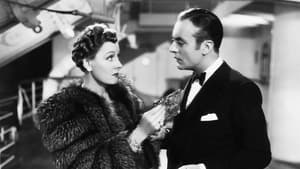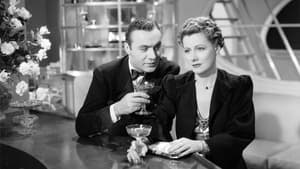Contact: info@alwanfilm.com
Video Sources 0 Views
- Watch trailer
- Love Affair

Synopsis
Table of Contents
ToggleReview: Love Affair 1939 Colorized – A Timeless Romance Enriched by Early Colored Cinematography

Introduction
“Love Affair” (1939) stands as a classic testament to the enduring power of love and the complexities of human relationships. In this article, we’ll explore the significance of this early colored film and its timeless appeal to audiences around the world.
Check The Full Colorized Movies List
Check Our Colorized Movies Trailer Channel
Understanding Love Affair 1939 Colorized: Director, Cast, and Genre
Directed by the visionary Leo McCarey, “Love Affair” (1939) showcases his ability to craft emotionally resonant narratives that tug at the heartstrings. The film features a stellar cast, including Irene Dunne and Charles Boyer, whose on-screen chemistry is palpable and captivating. With its blend of romance, drama, and comedy, “Love Affair” (1939) transcends genre conventions to deliver a poignant and unforgettable cinematic experience.
Exploring the World of Love Affair 1939 Colorized: Plot and Characters
“At its core, “Love Affair” (1939) tells the story of two strangers who meet on a transatlantic cruise and fall deeply in love, only to be separated by circumstances beyond their control. As they navigate the highs and lows of their tumultuous relationship, they discover the true meaning of love and sacrifice in the face of adversity. Along the way, they encounter a cast of colorful characters who illuminate their journey and shape their destinies in unexpected ways.
The Art of Film Colorization
Film colorization has the power to transform classic movies, enriching their visual appeal and breathing new life into timeless stories. By digitally adding color to black and white films, colorization allows viewers to experience familiar narratives in vibrant hues, immersing themselves in the rich tapestry of cinematic worlds with renewed appreciation and wonder.
Early Colored Films: A Brief History
The history of colored films traces its origins to the early days of cinema, with filmmakers experimenting with various techniques to add color to their creations. From hand-painted frames to early Technicolor processes, the evolution of colored film has been marked by innovation and ingenuity, laying the foundation for the development of modern colorization techniques that continue to captivate audiences to this day.
Love Affair 1939 and Its Early Colored Version
The decision to release “Love Affair” (1939) in a colorized format was met with both anticipation and apprehension. While some welcomed the opportunity to experience the film in vibrant color, others expressed concerns about the potential impact on its visual aesthetic. Nevertheless, the early colored version of “Love Affair” (1939) offers viewers a fresh perspective on the timeless romance, enhancing its emotional resonance and captivating audiences with its luminous beauty.
The Debate Over Film Colorization
The debate over film colorization is a contentious issue, with passionate arguments on both sides of the divide. Proponents argue that colorization revitalizes classic movies for modern audiences, breathing new life into familiar narratives and introducing them to a new generation of viewers. Conversely, detractors maintain that colorization compromises the artistic integrity of the original work and diminishes its historical significance. As the debate rages on, filmmakers and audiences alike are left to ponder the merits and drawbacks of colorization in the ever-evolving landscape of cinema.
Examining Love Affair 1939 as an Early Colored Film
As with any colorized classic, the impact of colorization on “Love Affair” (1939) is a matter of personal interpretation. Some may argue that it enhances the film’s visual appeal and immerses viewers in its world, while others may feel that it detracts from the stark beauty of the original black and white version. Regardless of one’s stance on the issue, there’s no denying the enduring power of “Love Affair” (1939) as a timeless romance that continues to capture the hearts of audiences around the world.
Influence and Legacy: Love Affair 1939 Colorized’s Impact on Cinema
“Love Affair” (1939) has left an indelible mark on the world of cinema, inspiring countless filmmakers and captivating audiences with its timeless tale of love and sacrifice. From its unforgettable performances to its sweeping cinematography, the film continues to resonate with viewers of all ages, reaffirming its status as a beloved classic of the romantic drama genre.
Director’s Cinematic Legacy: Beyond Love Affair 1939 Colorized
Leo McCarey’s influence extends far beyond “Love Affair” (1939), with a diverse body of work that continues to captivate audiences around the globe. From “An Affair to Remember” to “Going My Way,” McCarey’s films are celebrated for their emotional depth, compelling characters, and timeless themes, solidifying his legacy as one of the preeminent directors of Hollywood’s Golden Age. Through his groundbreaking work, McCarey has left an indelible imprint on the world of cinema, inspiring generations of filmmakers to follow in his footsteps.
Themes Explored in Love Affair 1939 Colorized
“Love Affair” (1939) explores a myriad of themes, from the transformative power of love to the complexities of human relationships. Through its richly drawn characters and poignant storytelling, the film invites viewers to ponder the nature of love, sacrifice, and redemption, as they embark on a journey of self-discovery and emotional awakening. As audiences immerse themselves in the world of “Love Affair” (1939), they are reminded of the universal truths that bind us together and the enduring power of love to overcome even the greatest of obstacles.
Reception and Controversy Surrounding Love Affair 1939 Colorized
Upon its release, “Love Affair” (1939) received widespread critical acclaim, with many praising its heartfelt performances, tender romance, and timeless themes. However, the decision to release the film in a colorized format sparked debate among purists, reigniting the age-old discussion surrounding film preservation and artistic integrity. Despite the controversy, “Love Affair” (1939) remains a beloved classic that continues to resonate with audiences of all ages, reaffirming its status as a timeless masterpiece of the romantic drama genre.
Where to Watch Love Affair 1939 Colorized Online
For those eager to experience the timeless magic of “Love Affair” (1939), the film is readily available on popular streaming platforms such as Netflix, Amazon Prime, and Hulu. Whether you choose to watch it in its original black and white format or the early colored version, “Love Affair” (1939) promises to transport you to a world of romance and intrigue, where love knows no bounds and the human spirit soars to new heights.
FAQs About Love Affair 1939 Colorized
Q: Is “Love Affair” (1939) based on a true story? A: No, “Love Affair” (1939) is a fictional tale crafted by screenwriters Delmer Daves and Donald Ogden Stewart, who drew inspiration from their own experiences and observations of human nature.
Q: Who are the main actors in “Love Affair” (1939)? A: “Love Affair” (1939) features an ensemble cast led by the talented Irene Dunne and Charles Boyer, whose on-screen chemistry ignites the screen with passion and longing.
Q: What awards did “Love Affair” (1939) win? A: While “Love Affair” (1939) did not win any major awards, it received critical acclaim for its heartfelt performances and timeless storytelling.
Q: Why was “Love Affair” (1939) released in a colorized format? A: The decision to release “Love Affair” (1939) in color was made to introduce the film to a new generation of viewers and enhance its visual appeal for modern audiences. While the choice to colorize the film sparked debate among purists, it ultimately allowed “Love Affair” (1939) to reach a wider audience and ensure its continued relevance in the annals of cinematic history.
Conclusion
In conclusion, “Love Affair” (1939) remains a timeless romance that continues to captivate audiences with its heartfelt performances, tender romance, and timeless themes. Whether viewed in its original black and white format or the early colored version, the film serves as a poignant reminder of the enduring power of love and the human spirit to triumph over adversity. So, whether you’re a hopeless romantic or a casual moviegoer, take a moment to experience the magic of “Love Affair” (1939) and discover for yourself why it remains a beloved classic of the romantic drama genre.













